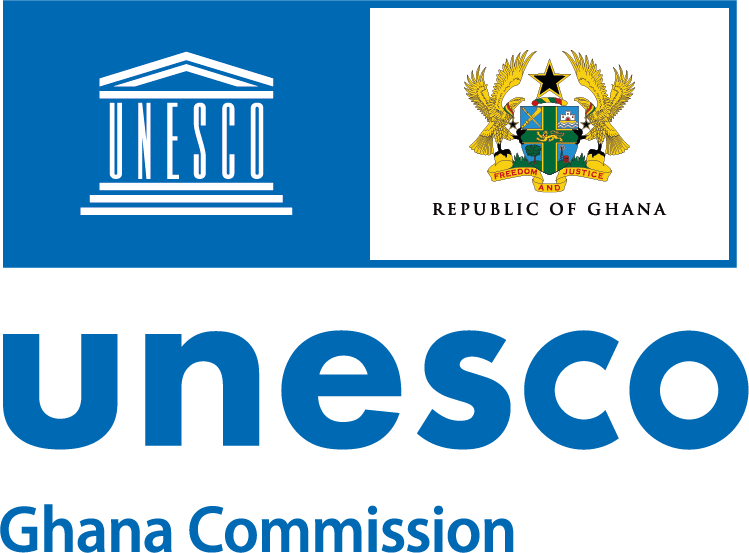- Login to ASPnet | Ghana Commission for UNESCO | Government Agency Responsible for the coordination of Ghana's contributions to and presence at UNESCO
Water Resource Management at Lake Bosomtwe

Conserving the Beautiful Ecosystem of Ghana’s Meteorite Lake
Lake Bosomtwe is one of six meteorite lakes in the world. It was caused by a meteorite action that took place millions of years ago. The meteorite formed a nearly circular crater that filled with rainwater over the centuries and formed the Lake. Due to that, Lake Bosomtwe has no in or outflow and is therefore a stagnant water. The lake has a diameter of about 11 Kilometres and a maximum depth of 78 metres. It is surrounded by a combination of wetland, forest and mountain ecosystems. Both, the lake and its environs provide living space for an incredible variety of 35 plant and 29 animal species. The site is furthermore home to about 50,000 inhabitants who live in various communities spread over the Biosphere Reserve and whose main economic activities are farming and fishing. The management of the Biosphere Reserve is the responsibility of the Lake Bosomtwe Community Resource Management Area (CREMA), supervised by the Pra Basin Secretariat of the Water Resources Commission and the Man and the Biosphere Secretariat. The CREMA, designated in 2014, involves the devolution of management authority to communities who manage natural resources on their land for sustainable development. By that, the community members are involved in the decision-making process. To retain the beauty of these ecosystems and to protect them from destruction, Lake Bosomtwe was designated as a UNESCO Biosphere Reserve in 2016. As that, it combines the conservation of geological and genetic diversity with research (especially on climate change), environmental monitoring, education and training. Like all Biosphere Reserves, Lake Bosomtwe and its environs are zoned into a core zone, a buffer zone and a transition zone, depending on how much areas must be protected and left in their original state.
Unfortunately, more and more challenges are coming up in the management of Lake Bosomtwe Biosphere Reserve. The streets are barely fixed and hardly accessible making exchanges between the communities as well as villages around the Biosphere Reserve difficult. A big issue is moreover the increasing pollution of the Lake and its environs. Plastic trash is getting collected on community dump yards, but then washed into the lake by heavy wind or rain. Alarming is also the high PH of the lake, which may be caused by washing dishes and clothes in the lake with soap.
Many inhabitants of the Biosphere Reserve see tourism as a great contributor to improving their living conditions. They hope to get sponsors who will do development work. However, tourism also causes problems. On the one hand, pollution of the lake shores increases; on the other hand, yield for the fishermen decreases, since tourist boats confuse fish and scare them away.
To counteract these issues, scientific research is being done together with foreign as well as local partner organisations. There is also a reforestation project as well as educational programmes to make community members aware of these environmental challenges. And the years of work paid off. Surveys in the communities show that environmental protection is now an issue that is given greater consideration than it was some years ago.
In the past, Lake Bosomtwe was the main source of fish for the tables of Kings of Ashantis and to preserve its sanctity and integrity, traditional laws were made to ensure that that the Lake would not be polluted.
The Story of the Lake as told by Opanin Akwasi Kyei (The Chief of Aborodwum):
Folklore by way of oral tradition indicates that the lake Bosomtwe was discovered by a hunter called Opanin Akora Bompe who was married to a woman called Obaapanin Saniagyako. They both resided at a village called Kokofu Asamang.
One day, the hunter went to the forest to hunt with his dog called Hyiawu. He saw an antelope and immediately shot it, but the wounded antelope ran into a small pond. They ran after the antelope but couldn’t find it in the pond but instead, some species of tilapia fish. He went back to the house and told his wife on what happened.
At the next hunting, they (hunter and dog) came across the same antelope at the same place but this time, he did not shoot it, but rather made his dog chase it. Wonderfully, the antelope hopped into this same pond. He went back to Asamang and told his wife about the occurrence of the same incidence for the third time. He went to inform the chief at Asamang and some customs and rituals were performed, and there came by the name, ‘‘Bosom-Twee’’ (Antelope god).
Bosomtwee gradually became larger and today we have the largest Natural Lake in West Africa.
